Just like floors, walls, doors, and staircases, floor molding can also come in various heights, types, materials, and styles. What’s more, the differences between these types of floor molding aren’t just cosmetic or stylistic either – most of them are purely functional, and choosing the right molding for your home is, in fact, quite important.
So, what are the 10 main types of floor molding and what should you know about them? And what exactly is floor molding anyway?
What is floor molding?
Floor molding is the straight thin pieces we put in the transitions between the floor and walls in our home, under a door threshold, on the edges of staircases, and in other such transitional spaces. The molding can be made of many different materials too – wood, vinyl, plastic, MDF (medium density fiberboard), and more.
Choosing the right material is important but the type of molding is what matters more. Are you looking for molding to cover the bottom of the wall and keep it safe from wear, tear, and dirt? Do you need some molding for the expansion gap between the laminate floor in the living room and the tile in the entrance hall? Or, do you need end caps for the staircase?
All modern homes need molding of some kind or another, whether you have stone or hardwood floors, a carpet, or anything else, there is a molding that’d be an excellent choice for your case.
10 types of floor molding
Naturally, there are much more than just 10 types of floor molding overall. Especially when you go into the various subtypes, custom jobs for old houses, and so on, you can encounter many alternative and special cases.
The 10 types of floor molding below are the ones you’ll see most often, however, and for good reasons – they are ideal for most situations that might come up in a modern home.
1. Baseboards
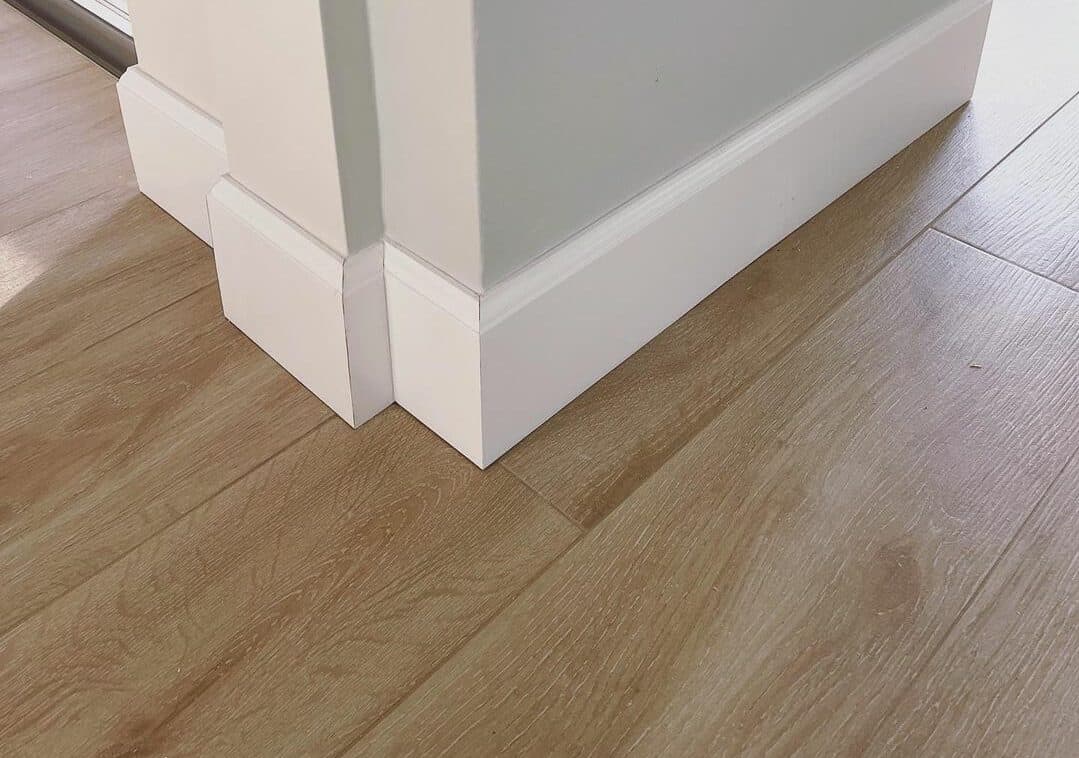
Baseboards are so common that many people think of them as “just molding”, i.e. as all floor molding is. Of course, this isn’t the case, but baseboards are indeed a perfectly good and functional type of floor molding that does fit in many situations.
Essentially, baseboards are thick and very long boards made out of wood, plastic, or MDF, and they can be tall anywhere between a couple and six inches.
Baseboards can be and are made in all types of shapes, colors, and designs too, they can be painted over, and they are usually just nailed or bolted into place. Because they are so thick, baseboards are one of the more durable types of moldings and they are extra good at protecting walls from scratches while moving furniture or vacuuming.
This huge variety of baseboards is a big reason why many people looking for “different types of floor molding” think they are actually looking for different types of baseboards. In reality, however, baseboards don’t come in nearly as many types and styles as the other types of floor moldings below.
2. Two-Piece Base Trim
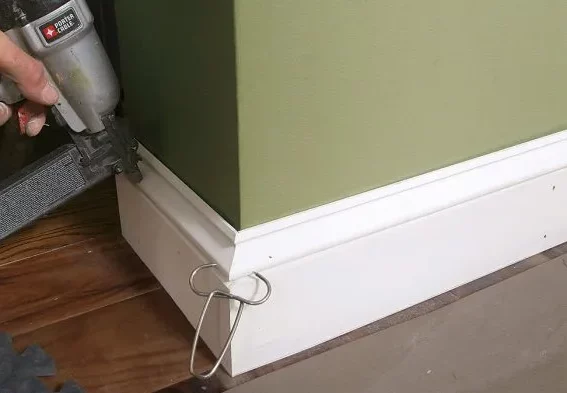
As its name suggests, the two-piece base trim comes in two – typically wooden – pieces that need to be installed separately. The taller piece or the “base shoe” is placed vertically on the floor over the shoe mold and along the wall’s surface. After that, the much smaller top piece is installed on top of the base shoe.
This type of molding is very durable and great for long-term purposes as well as for floors that may need to be replaced soon because of how easy the two-piece trim is to install, uninstall, and re-install. The only problem with this trim is in installing electrical connections but even those can be managed with a bit more elbow grease.
3. Quarter Round Floor Molding
This type of molding can either be used on its own or over a baseboard or another type of molding. It effectively looks like just a quarter circle made of wood. You can nail it or just use glue, the molding should look great either way.
Ideally, you’d install this over a baseboard or a vertical tall and rectangular piece of molding to give it a more classy look and to prevent the gathering of dust on top of it.
4. Reducer Molding
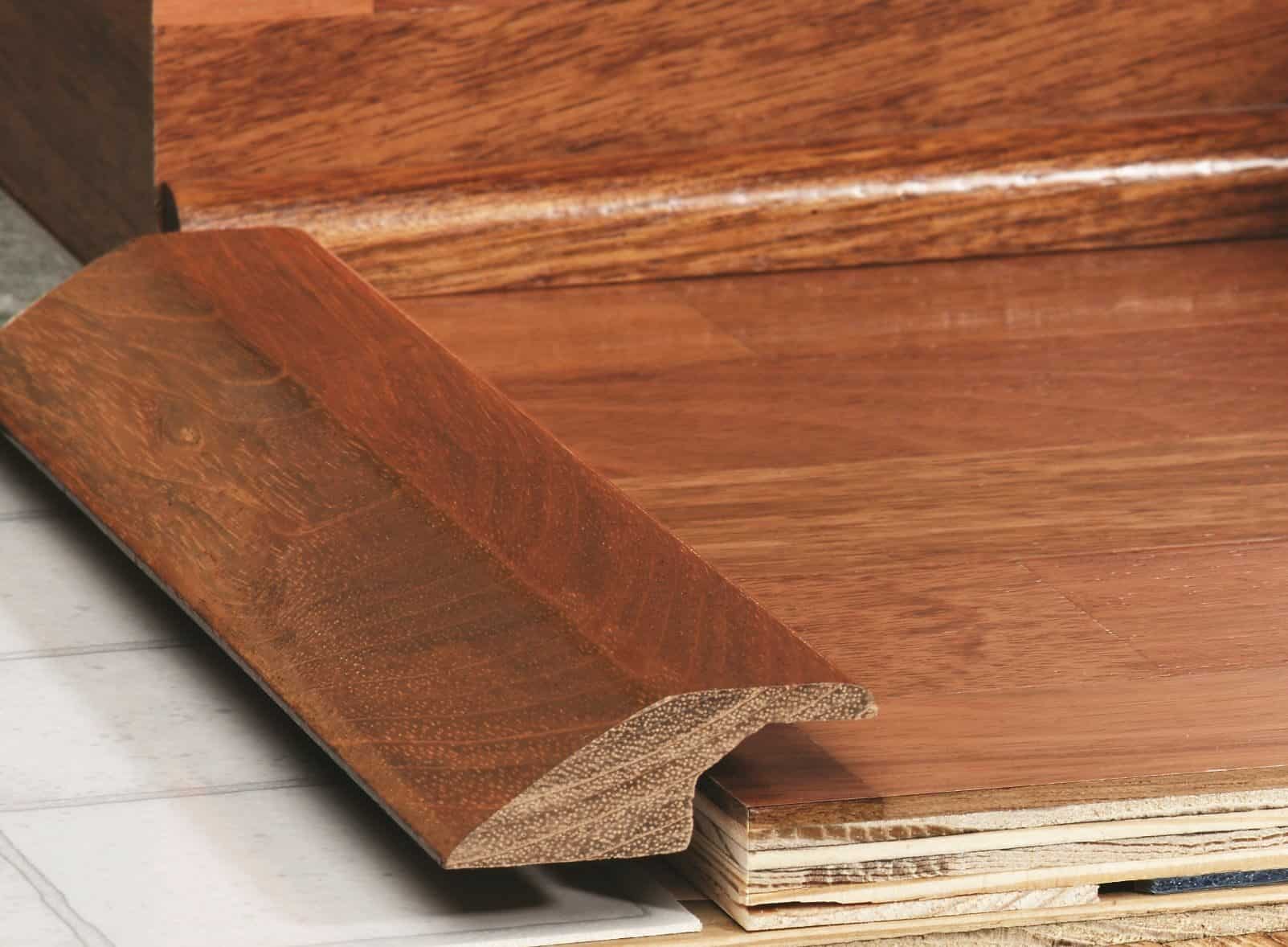
This is a very common type of transition molding that’s used between floors of different heights. For example, if you have ceramic tile in the entrance hall and hardwood in the living room and the two are of slightly different heights, a nice piece of reducer molding under the living room door will easily cover that up.
5. Cove Molding
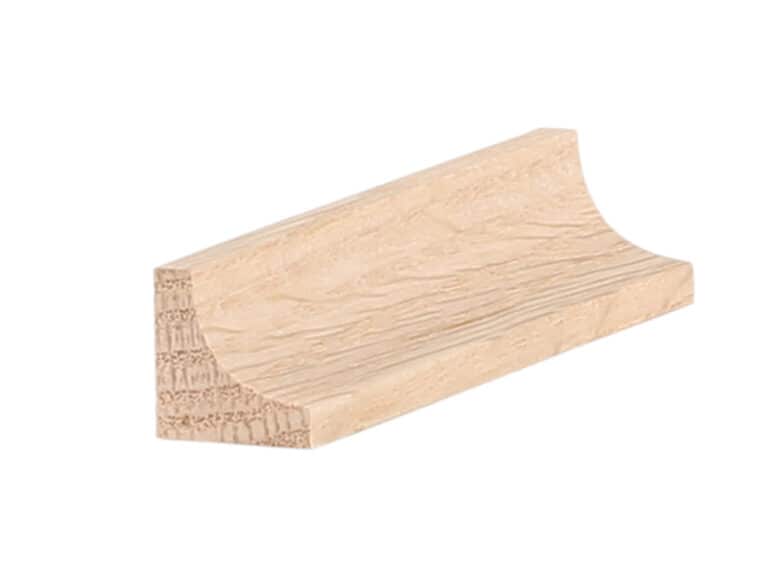
This type of molding is most often preferred for bathrooms and kitchens because it’s ideal for diverting water spills away from the walls and back onto the floor. Cove moldings are made of single plastic or MDF pieces that just get nailed to the edge between the floor and the wall – the wide side is meant to go up the wall while the narrow stays on the floor.
This creates a nice and rounded transition which is great for diverting water but isn’t suitable for running cables behind it – hence why cove molding is usually not installed in other parts of the home even though it looks great and is very easy to work with.
6. Mop Board Base Trim
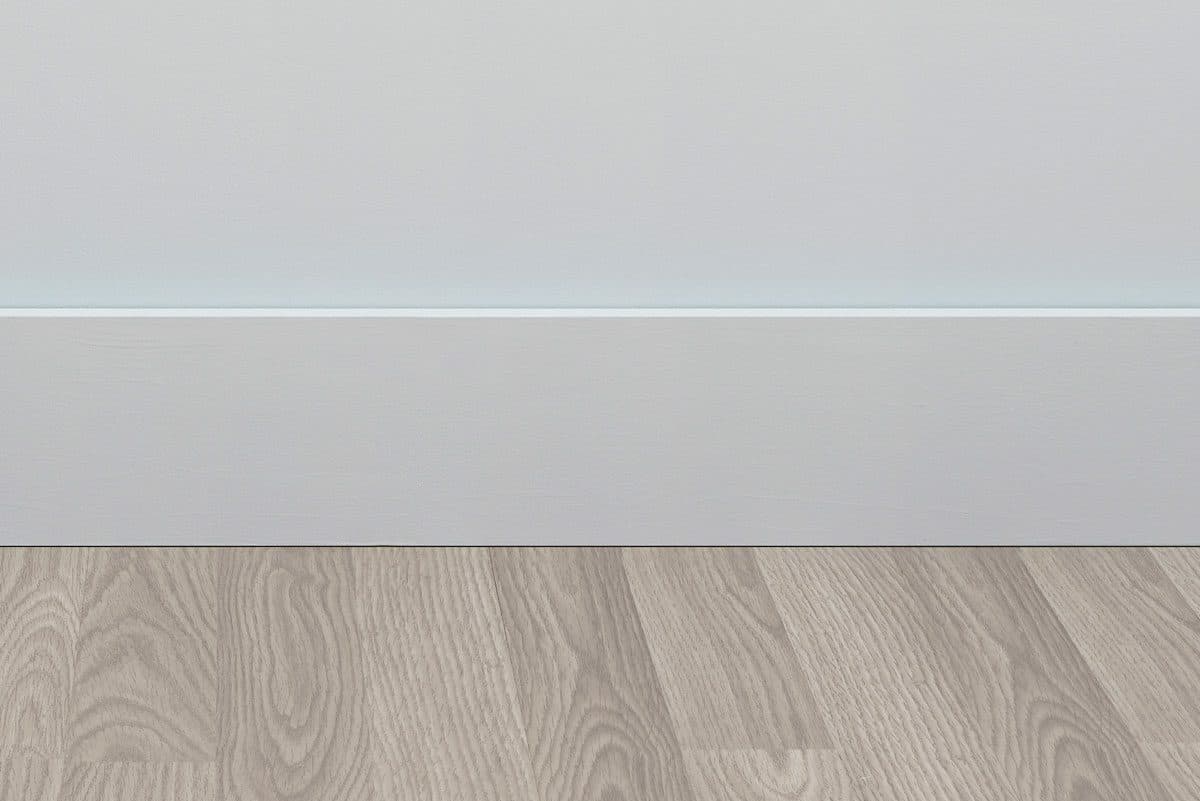
Effectively a simpler alternative to the two-piece base trim, the mop board trim is also known as a one-piece base. This is literally just a small rectangular piece of painted wood that’s installed in the corner to cover the edge of the wall and the floor. You can also look at it as a taller baseboard.
Mop boards are very easy to install and look great in most situations. They do need to be painted over with an extra coat or two to look good, however.
7. T-Molding
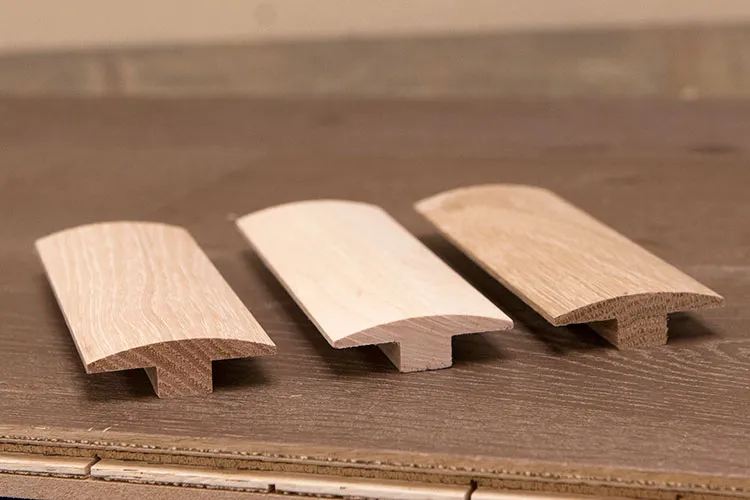
Another type of transition molding, t-molding is named after its shape – like the letter “t”. A kind of transitional molding like the reducer molding, t-molding is a bit more advanced because it also has a bottom part that’s meant to fit in the extra space that’s often left between two different horizontal surfaces of different heights.
8. Stair Nose Molding
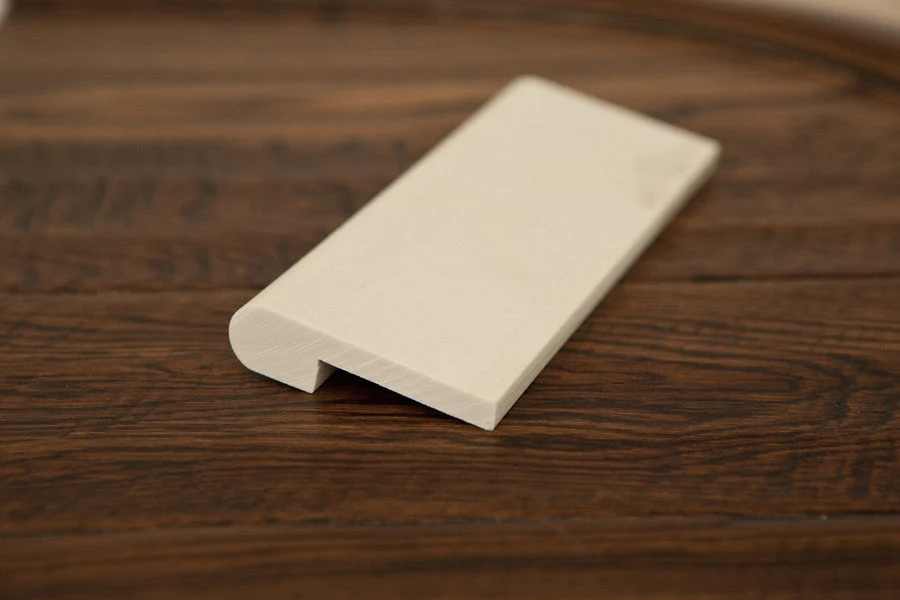
As its name suggests, stair nose molding is the hardwood or laminate molding you’d put on the edges of indoor staircases to create a soft and smooth surface between the different stairs and the flooring.
This is often seen as a mere decorative choice, but these “stair caps” have plenty of functionality too – as they are usually made of polished wood or laminate (sometimes metal) they don’t chip off as easily as the stairs get used. They also keep the edges of the stairs in a sharp and consistent enough shape to prevent slipping.
Stair nose moldings can also come in several sub-types and can be seen as a whole separate category in and of themselves – some are thinner and basically only cover the edges of the stairs while others are so thick that the stairs need to be made with the molding in mind, i.e. there needs to be space left for them.
9. Farmhouse Base Trim
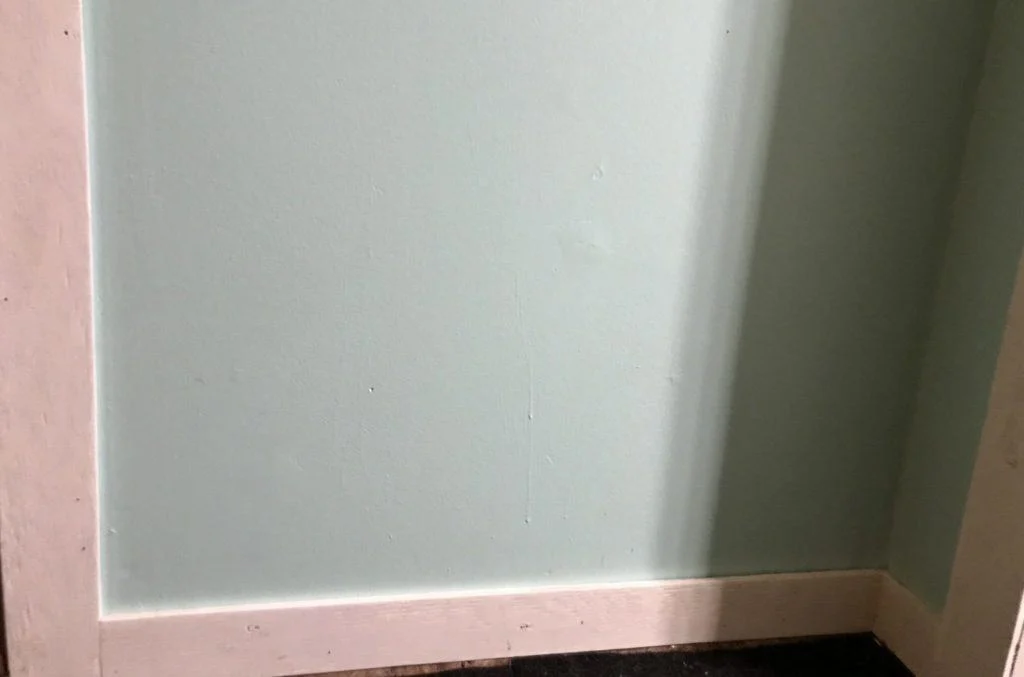
A classic, beautiful, and very effective floor molding, the farmhouse base trim is tall, durable, and generally awesome in every way except the fact that it’s a bit costlier than other base trim types and it takes longer to install.
Still, if you have room in your budget and you’re up for a bit more work, this trim offers extra protection for your wall, it can be painted over for an awesome and stylish look, and it’s suitable for every room – a great choice for homes in the country but can work elsewhere too.
10. Square Nose Molding
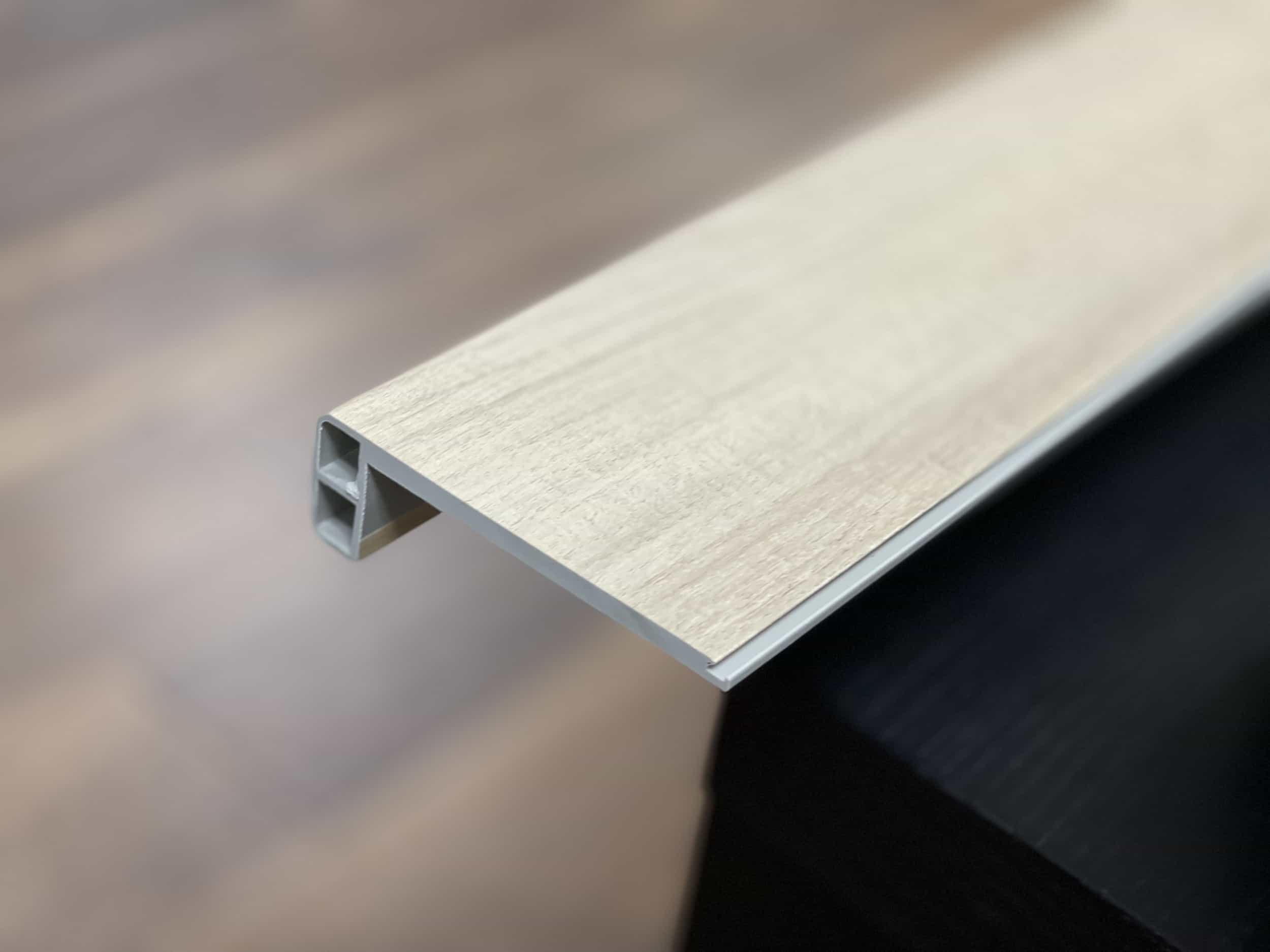
Lastly, this type of molding is used when there is a gap or a lip left over between the floor and the wall – the molding is meant to not only cover the two sides of your home but to connect them too.
This type of molding can also be used under a sliding glass door or at the bottom of stairways – wherever it’s necessary. It gives the space a rather minimalistic look too as the top part of the molding doesn’t go that high once its bottom part covers the hole you used this on.
In conclusion
Just as there are different types of flooring, there are different types of molding for any type and style of home. Above we left the different colors and materials of the molding mostly out of it but those are also things to look into once you’ve figured out exactly what type of floor molding you’ll be going for.
Of course, the quality of the molding matters too which is why it’s also important to find a good manufacturer and install it properly. Fortunately, most floor molding is easy enough to install even for novice DIY enthusiasts so the final step is rarely an issue.